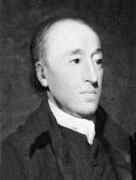Person: Hutton, James

James Hutton was a Scottish chemist and geologist best known for his theory of the age of the Earth. He was greatly influenced by Newton's work.
Mathematical Profile (Excerpt):
- In 1736, when he was ten years old, James entered Edinburgh High School.
- At the University of Edinburgh Hutton was taught mathematics by Maclaurin and logic and metaphysics by John Stevenson.
- Hutton, deciding to take the training which involved the most chemistry, returned to the University of Edinburgh in November 1744 to undertake medical studies.
- While in London, Hutton corresponded with James Davie who had been a school friend and was still living in Edinburgh.
- In the summer of 1750 Hutton visited Edinburgh, where he and James Davie set up a chemical works.
- The works was an immediate success and provided Hutton with an income for the rest of his life.
- In 1752 Hutton moved to a farm in Norfolk where he spent two years.
- These were important years for Hutton in another way, for it was during these years that his interest in geology began.
- We should stress that at this time geology would not have been considered as a science in its own right and Hutton would consider himself as a natural philosopher.
- It was around this time that Hutton began to read books on the topic; reading the works Discourse on earthquakes (1705) by Hooke, New theory of the Earth (1696) by Whiston, Protogaea (1749) by Leibniz and Histoire naturelle by Buffon, as well as Steno's treatise Dissertation concerning a solid body enclosed by the process of nature within a solid.
- In the summer of 1754 Hutton moved to Slighhouses where he began farming.
- The most important of his friends were Joseph Black who discovered carbon dioxide, James Watt who made the first practical steam engine, and Adam Smith the economist.
- The house in which Hutton lived in Edinburgh now became his laboratory as well as his home and he continued to pursue his theories of the history of the Earth.
- Hutton looked at the rocks around him to understand the history of the Earth rather than seeking answers from the Bible.
- Some time during 1784 the Royal Society of Edinburgh invited Hutton to give two lectures on his theory.
- Hutton was well enough to deliver the second of his lectures four weeks later on 4 April.
- Hutton's reaction was what one would expect of an outstanding scientist - he undertook trips to view rock formations to try to gain further evidence to prove that his theory was correct.
- One such expedition was in the summer of 1788 when Hutton, Playfair, and Sir James Hall sailed down the North Sea coast of Scotland viewing the exposed rock formations in the cliffs.
- A printed version of Hutton's two lectures to the Royal Society of Edinburgh did not appear in print until 1788, but since the further evidence which Hutton had gathered in the years following his lectures is not mentioned one has to assume that the delay was in the printing of the paper in the Proceedings of the Royal Society of Edinburgh.
- This treatise The theory of the earth appeared in 1795 but sadly it was not nearly such a good book as it might have been since Hutton wrote it during a time of deteriorating health.
- One also has to add that, even before the severe health problems, Hutton always seemed much more successful in convincing his fellow scientists when he spoke to them than when he wrote.
- Hutton had a rather peculiar written style of presentation which made his theory less intelligible and, as a result, he received less acclaim than he deserved.
- Playfair's published Illustrations of the Huttonian Theory of the Earth in 1802.
- He presented Hutton's theories in a different style from that of The theory of the earth.
- His simple and eloquent style consisted of a series of chapters clearly stating the Huttonian theory, giving the facts to support it, and the arguments given against it.
- The success of Playfair's presentation can be judged by the fame and credit which have since been given to Hutton, who is now regarded as the first great British geologist.
- Playfair spent almost five years, from Hutton's death in 1797 until 1802, writing the Illustrations.
- The majority of his spare time was spent travelling through Britain searching for evidence to support Hutton's theories, having learned on trips made with Hutton, such as the 1788 trip mentioned above, how to interpret the rock formations he saw.
Born 3 June 1726, Edinburgh, Scotland. Died 26 March 1797, Edinburgh, Scotland.
View full biography at MacTutor
Tags relevant for this person:
Origin Scotland
Thank you to the contributors under CC BY-SA 4.0! 

- Github:
-

- non-Github:
- @J-J-O'Connor
- @E-F-Robertson
References
Adapted from other CC BY-SA 4.0 Sources:
- O’Connor, John J; Robertson, Edmund F: MacTutor History of Mathematics Archive
